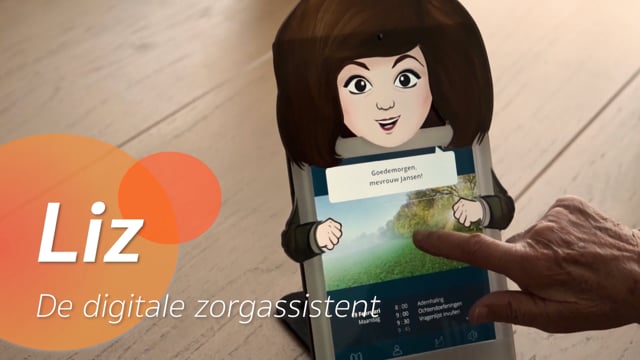Usable care technology: step-by-step and in collaboration with seniors
Innovation really gets going with tenacious and entrepreneurial creatives . Martijn Vastenburg is one of them. He gave up his job as an assistant professor at TU Delft for an adventure in care technology development. Which lessons did he learn?
Usable care technology: step-by-step and in collaboration with seniors
Innovation really gets going with tenacious and entrepreneurial creatives . Martijn Vastenburg is one of them. He gave up his job as an assistant professor at TU Delft for an adventure in care technology development. Which lessons did he learn?
The journey of Martijn Vastenburg, ConnectedCare b.v.
First stage
Acquiring ideas
As a researcher and lecturer at Delft University of Technology (TU Delft), Martijn Vastenburg had been involved in technology and care since 2007. As an industrial designer, he investigated how smarter houses could help people to continue to live at home longer. According to Vastenburg, initiatives in this area used to be strongly technology-driven. Whereas people themselves said: the technology might be great, living at home longer is mainly about having a good social network. That was the trigger for Vastenburg. ‘And it was reinforced by the fact that my grandma was suffering from advanced dementia at the time. I experienced first hand that providing support requires far more than just technology. It’s not just a matter of placing a couple of sensors.’ This insight led to a project in the ZonMw programme Active & Assisted Living (AAL): HalloZorg (Hello Care), which linked technology to someone’s social network. How do you ensure that family, neighbours and home care come closer to each other?
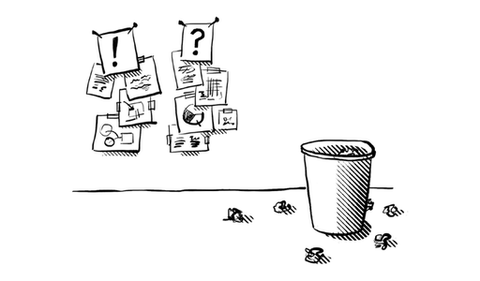
Tip: brainstorm with a cup of coffee
‘Ideas often emerge spontaneously along the way. And that’s more likely to happen while sipping a coffee than during a formal interview.’
Martijn Vastenburg, founder ConnectedCare
Brainwave while sipping a coffee
HalloZorg did not make it as a commercial product. But the lessons learned from the project did contribute to the digital care assistant Liz (also see the fourth stage). In Vastenburg’s experience, continuous learning and development characterise all journeys to new technology. ‘Constant contact with care providers, patients, clients and informal carers allows you to discover where things can be improved. And that has always been my biggest drive: how do you keep on finding new directions in which things fall into place?’ Innovative ideas often emerge spontaneously along the way, he says. And that is more likely to happen while sipping a coffee than during a formal interview.’

Lesson: listen to what people come up against in daily life
‘New ideas arise if you know how to establish new links; if you make a fresh combination between a problem and the possible solutions. It’s important to keep listening to what people come up against in everyday situations. And to stay informed about the latest technical possibilities. The best ideas are often surprisingly simple. Afterwards, you sometimes wonder why on earth you didn’t think of it before.’
Martijn Vastenburg, founder ConnectedCare
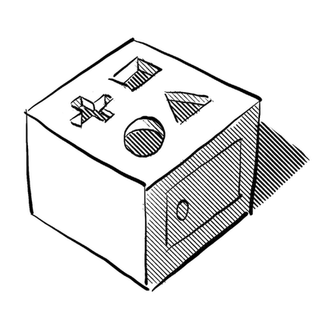
Finding the right match
Vastenburg remembers a professor at a university of applied sciences who was working on nutrition problems among seniors. ‘It is difficult to supervise them remotely. The professor was working with questionnaires but these are often too complex for older people. And using the computeris not always the solution either. We came up with a social robot that can ask questions and provide easy-to-follow instructions. The robot asks a person whether they have eaten and how they feel. That information is in turn used to adjust the supervision.’ A similar solution is the Guardian, a social robot that supervises vulnerable seniors. Vastenburg: ‘The challenge is always in finding a good match between the technological possibilities and the concrete situation in practice. I see Guardian as a project in which we explored possible directions without knowing in advance which product might emerge. A programme like AAL provides room for such a search in which you acquire an awful lot of knowledge and can test whether your ideas work.’
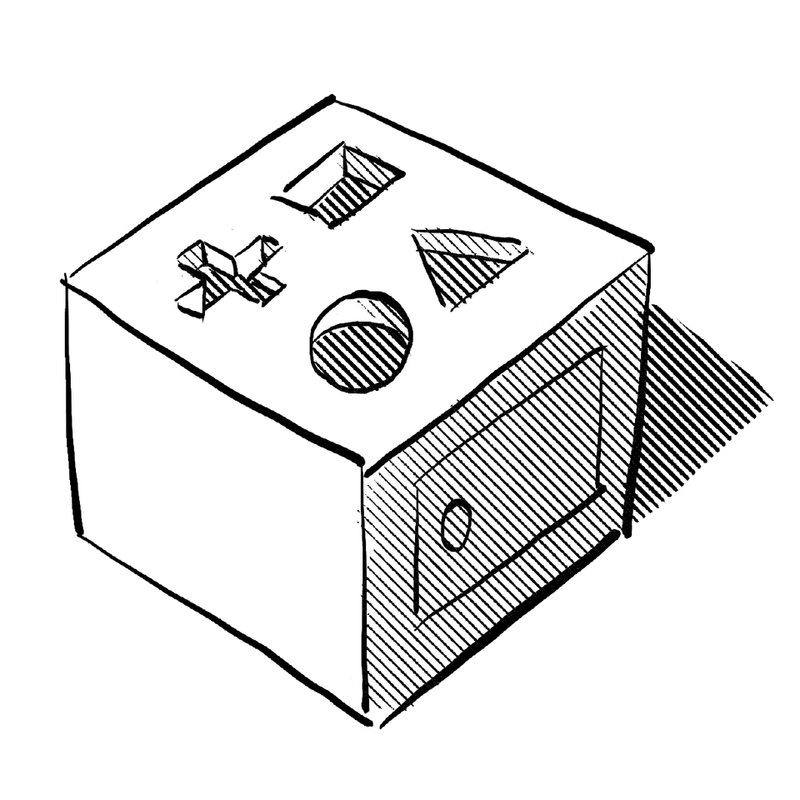
Plenty ideas, but which will be actually successful?
Read about the second stage of the journey >
Starting a company makes it easier to switch gears
‘I started my own company – ConnectedCare b.v. – when I realised that at university, my role usually finished once the research was completed. Whereas I actually wanted to go further. I’d like something more to emerge than simply a scientific publication. How do you ensure that what you investigate and develop has impact? Achieving that is incredibly difficult, even from within a company. But, the main advantage is that in a company it’s far easier to change gears. If I see an opportunity and we’re convinced it has potential, we can immediately say: let’s go for it! That means you can do the projects that are fun and are relevant for society as well. That gives a lot of energy. The disadvantage, of course, is the uncertainty as you never know how many assignments you’ll have next year.’
Martijn Vastenburg, founder ConnectedCare
Don’t become enchanted too quickly!
‘The idea of linking technology to a person’s social network is great. But don’t become enchanted by it too quickly. We’ve conducted research – together with VU Amsterdam – on those networks in practice. This revealed, for example, that people with a lower socioeconomic status often scarcely have a network. So, you can introduce a fantastic tool, but your idea won’t succeed if the network isn’t there. In that case, you’ll need to come up with something else.’
Martijn Vastenburg, founder ConnectedCare
Second stage
Exploring opportunities
Vastenburg says that he and his team at ConnectedCare never suffer from a lack of ideas. It’s more a matter of making the right choice between the many available options. What are the promising ideas? Which conditions need to be in place before you can move ahead? ‘A very practical point is simply whether funding is available. Because without it, you cannot take the first step. So, quite a few ideas don’t make it just because we could not get funding for them.’ Another aspect is whether a certain idea is in fact technologically feasible. Nowadays, developments in social robotics happen so fast that you can do far more with robotics than about ten years ago, explains Vastenburg. Also, there needs to be a certain sense of urgency among end users – seniors, informal carers, care providers. ‘A care organisation, in particular, must really want to put an innovation high on the agenda. Ultimately, it will only work if all these things come together. Only thenyou can estimate whether an idea has a chance.’
Pitfall: many different goals
‘The pitfall in large, international projects – also within AAL – is that the parties within the consortia all have their own interests. You then risk losing sight of the common goal. As the leading party, you need to critically look for suitable collaborating parties, which would allow you to determine that goal.’
Martijn Vastenburg, founder ConnectedCare
Collaboration increases your chances of success
ConnectedCare has a core team of 7 employees, plus several people in a flexible shell. Vastenburg: ‘Half of our people have a background in industrial design. They are particularly strong in concept development and user research. That involves testing with seniors and other users, and subsequently adapting a design. On top of that, we have technical developers, and we also do part of the business development and sales ourselves.’ Another important lesson that Vastenburg learned is that to realise impact, you need to start collaboration as quickly as possible. ‘So, don’t think: we have a good idea, let’s keep it to ourselves! You need to involve parties who are better in sales and who have direct access to your target group as early as possible. We are now talking with a large party that supplies ICT systems in care. They already have a lot of clients in this field. If they would add our innovation to their portfolio, that would be very interesting for us.’
Tip: work together for the same goal
‘Start your collaboration as soon as you have brought people together with the same drive. Make sure you do not involve parties who only see the collaboration as an optional extra. You will only make real progress if all partners have the same ambition and, therefore, the same goal.’
Martijn Vastenburg, founder ConnectedCare

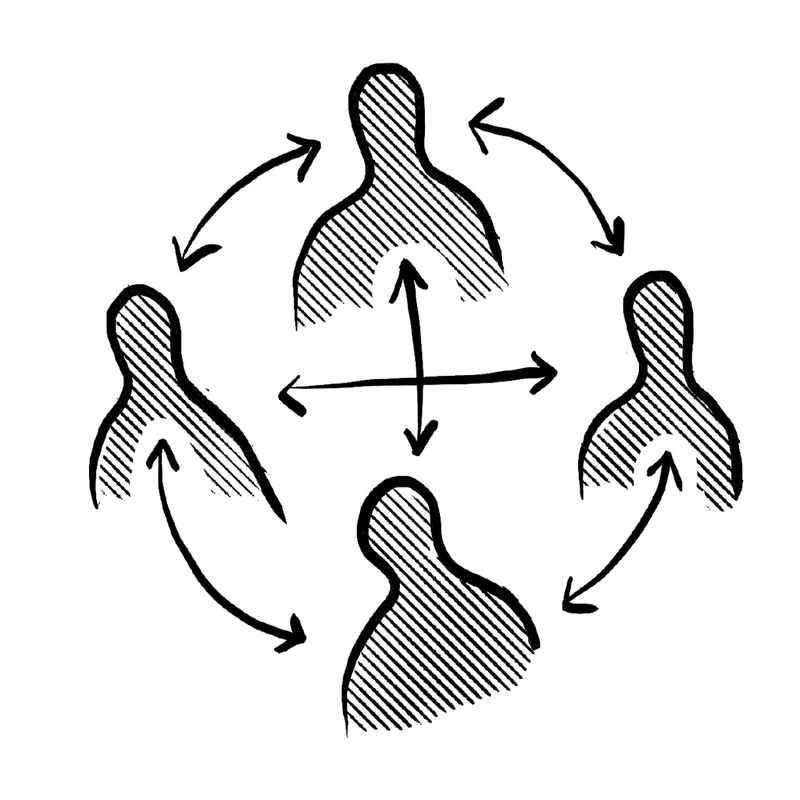
Keep on networking
How do you manage to come into contact with such a large party? The magic word is networking. Vastenburg already knew the company and the technological director proved to have a research background as well. ‘Then you have a match, andwe had a nice common entry point. I also make extensive use of my international AAL network. And here in Nijmegen, where we are located, there’s a good eco-system in place to support e-health innovations. As a result, there is a strong regional effect too. The region Arnhem-Nijmegen is a good place to build up things like this.’
R&D
Research en development (R&D) staat voor ‘onderzoek en ontwikkeling’. Kenmerkend voor R&D is dat het onderzoek oorspronkelijkheid én vernieuwing beoogt.
Tractie
Een duidelijke groei van het aantal afnemers van een product of dienst.
The dilemma in a commercial collaboration
‘For innovators and developers, funding programmes like AAL or nationally are highly relevant, especially for R&D collaboration projects +. Subsidies makes it possible to take a first step with your idea. But that is not enough to help you pass through that infamous valley of death +. For that, you need investors and they want to see some traction + before they’re willing to sit down and talk with you. In my experience, parties with a more academic motivation have a stronger drive to innovate and explore. Companies with a commercial interest often do far less for your project. They mainly pick up those things that tie in with their interests. It’s a delicate balancing act. You really do need such a business-driven party on board if you’re going to achieve commercial impact in the end. But their role in the projects is often a bit disappointing.’
Martijn Vastenburg, founder ConnectedCare
Tip: present concrete sketches
‘Quickly convert possible solutions into a tangible form, for example with sketches and scenarios. The more concrete something is, the easier it will be for your target group of seniors to provide you with feedback. That will help you discover more quickly whether an idea has a chance of succeeding.’
Martijn Vastenburg, founder ConnectedCare
Experienced people help to increase your chances
‘In our projects for pharmacists, I like to work with Thijs van Nuenen, the inventor of medicine dispenser Medido. I have a very high opinion of him because he conceived and built up his product from the ground up, and he also managed to get it funded by health insurers. And that’s the very reason why he’s been able to realise societal impact. The collaboration with Thijs teaches us how we can develop ideas about supervising medication into a marketable product.’
Martijn Vastenburg, founder ConnectedCare
Third stage
Developing and experimenting
Vastenburg thinks that co-creation is a “complicated” concept even though he teaches about it at Eindhoven University of Technology. ‘End users help you to understand the problem and to explore possible solutions. Their insights are valuable, but you need a designer's experience to put these in perspective. In all of our projects, we have developed a sense of what will and will not work. However, as soon as you enter into dialogue with others, new things always emerge. Interaction is what counts.’ In Vastenburg’s experience, people often find it difficult to come up with ideas when you pose open questions about what they want. But you can get them to reflect really well on concrete proposals that you’ve already come up with. ‘That’s how you trigger people to come up with new ideas.’
Tip: organise critical feedback
‘Make sure you receive critical feedback in your development trajectory so that you don’t lose sight of the ethical aspects of digital solutions. And use the AAL Guidelines for Ethics, Data Privacy and Security and tools like the Data Ethics Decision Aid.’
Martijn Vastenburg, founder ConnectedCare
Present tangible things
‘We try to present tangible things as soon as possible,’ says Vastenburg in explaining the ConnectedCare approach. ‘We purposely include sketches of things that we already know won’t work. You immediately notice that some things resonate with people, whereas others absolutely don’t.’ There are also approaches to co-design + or co-creation + in which a developer pose a problem to the user and says: now go and try out possible solutions. However, Vastenburg’s team does not choose that approach. ‘We like to do focus group sessions with circa five seniors. We prepare several things for these sessions. A discussion follows and then the seniors bring the material a step further. The sooner we discover that a certain direction does not work, the more mistakes we can prevent. And that saves unnecessary costs as well.’
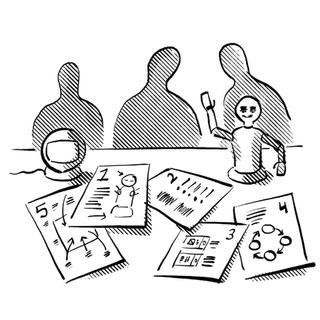
Pitfall: great product, but ‘not for me’
‘I can remember a lady who first participated in a co-creation session and later used a product at home during the field test. At the end, she said: I think it has become a fantastic product, but not for me. Then I thought to myself: wait a moment, we developed this especially for you, so how come you’re telling me this now? That is indeed a pitfall. Therefore, make sure you don’t just ask what a good solution to a problem would be. But also discuss: what needs to be done to ensure that you will use it in your personal situation?’
Martijn Vastenburg, founder ConnectedCare
Business-like is better
During the development of Liz, Vastenburg benefited a lot from the collaboration with seniors. ‘Liz is a figure with facial expressions. She looks at you and blinks with her eyes. Part of the target group clearly expressed that they did not want something patronising in their home. Previous versions included a lot of dialogue in the communication, resembling a cosy chat with a neighbour. During the testing, we discovered that some people did not like that. They preferred a more business-like tone. For example, initially, we had several variations for how Liz welcomed somebody in the morning. There was a version in which she said: Good morning, it’s going to be a nice day today. Are you up for it too? Some people liked that, whereas others did not appreciate it at all. So now she simply says good morning.’
How to avoid getting lost on winding roads?
Read more about the fourth stage of the journey >
More honest towards a digital coach
‘We did a pilot with people with obesity. In this pilot, Liz helps them with their eating habits. We not only wanted to discover what people ate, but also whý. So you areable to support people and intervene if they have unhealthy eating stimuli. Why do they open that fridge again in the evening? It was interesting to observe that users were more open towards Liz than to their own human coach. They were far more honest about their motives and eating behaviour to the digital coach, whereas they tended to give socially desirable answers to their dietician.’
Martijn Vastenburg, founder ConnectedCare
How do you progress after the development stage?
Innovation in the area of technology is a process that usually takes many years. That can clash with the requirements of a grant programme, because , almost by definition, the intended solution will not be ready within the funded project period. A completed project with a nice final report does not say much about the impact that you’ve realised. Or about the opportunities that your innovation will ultimately create. Martijn Vastenburg: ‘On the one hand, you want to be evaluated on the basis of the project outcome. But in practice, there are simply many barriers that sometimes keep you from getting further. There shouldbe more funding to actually implement innovations in the market. So, not just for the development, but also for the subsequent stage.’
Tip: ask for feedback in each stage
‘Clearly plan what you want to discuss in which phase. At the start of the trajectory, it’s better to provide sketches. If you then already show a completed screen, you will get feedback about how large the button on that screen should be. Whereas you’re not looking for feedback at this level of detail during this phase.’
Martijn Vastenburg, founder ConnectedCare
Co-design
Is an approach to design which actively involves all stakeholders in the design process to help ensure the result is usable and meets their needs.
Co-creation
A form of cooperation in which all participants exert an influence on the process and the outcome of this process.
R&D
Research and development (R&D) is characterised by research that intends to be original and innovative.
Valley of death
The period between the initial investments for the development of a product and the moment that a company begins to make a turnover with that product.
R&D
Research and development (R&D) is characterised by research that intends to be original and innovative.
Evidence
Scientific research on the cost-effective of an innovation.
Traction
A clear growth in the number of clients of a product or service.
Fourth stage
Actual use in practice
The road to a usable, implementable solution is long and sometimes winding. Vastenburg is talking about MedGUIDE, a project to supervise the medication adherence of seniors living at home. It is easier for pharmacists and doctors to adjust medication if they have information about changes in someones condition, including self-reporting about side effects. ‘In an AAL project, this concept was expanded by adding sensors that could measure things like sleeping pattern, nutritional behaviour and social interaction. Artificial intelligence was used to discover the interaction between different medicines. And there was a follow-up trajectory with Utrecht University of Applied Sciences that was funded by the Royal Dutch Society for the Advancement of Pharmacy (KNMP). The BENU chain of pharmacies was also involved. It was interesting to observe that in everyday practice, our idea was reduced to its first principles, which is: an application without sensors and based on self-reporting. The idea is that self-reporting will become part of the periodic medication assessment made by the pharmacist.’
Tip: Dare to fail
‘Don’t be afraid to fail. Even if you do not get as far as a product, the outcomes of your project can still be used. All of the knowledge you built up is not suddenly lost. Use those experiences to set out on a new path.’
Martijn Vastenburg, founder ConnectedCare
Testing in practice determines the value
MedGuide is a promising project, because ConnectedCare is working together with the KNMP and organisations in the field. Vastenburg: ‘In preparation of the market launch, we can now, with the largest parties in the Netherlands, demonstrate the value of a solution that is aligned with the work processes of pharmacists. People are in the centre and the technology has a supporting role.’ Testing the concept in practice is an important step, but still does not guarantee actual implementation, emphasises Vastenburg. ‘It remains a development project. As soon as it becomes a real commercial proposition, you enter entirely different trajectories. Then a solution needs to be integrated in, for example, the standard systems, which is a challenge in itself. At this test stage, it is about the pharmacy professionals saying: we can see the added value and we are prepared to pay for this.’

Lesson: innovators are not necessarily good salespersons
‘As a company, we have made several investments in commercialising products. Yet in the end, we realised that this is not our core competency. We’re good in innovating, but we need a strongly operating sales party to bring it to market and scale things up.’
Martijn Vastenburg, founder ConnectedCare
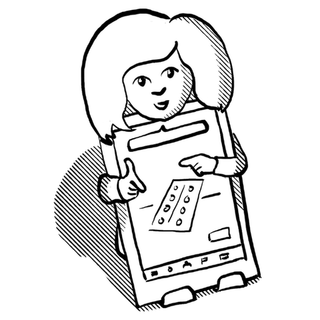
Building up evidence for reimbursement
Vastenburg is now in a similar trajectory with Liz. Together with Vilans, the national Centre of Expertise for Long-term Care in the Netherlands, he investigates how they can convince health insurers to reimburse Liz. Which evidence + do health insurers require to decide in favour of that? With Liz, we are also testing if Liz can be used in care processes. Can she provide support in a treatment trajectory? We are now examining that in various care domains, for example, in the rehabilitation sector. Is it possible to go home earlier after a hip operation and rehabilitate with Liz at home, under the clinic’s supervision? Interestingly, the therapists there indicate that they actually want to have Liz in the clinic as well. For example, to have Liz at the bedside to supervise exercises because that will save time. This enables us to help more people, which is valuable as well.’
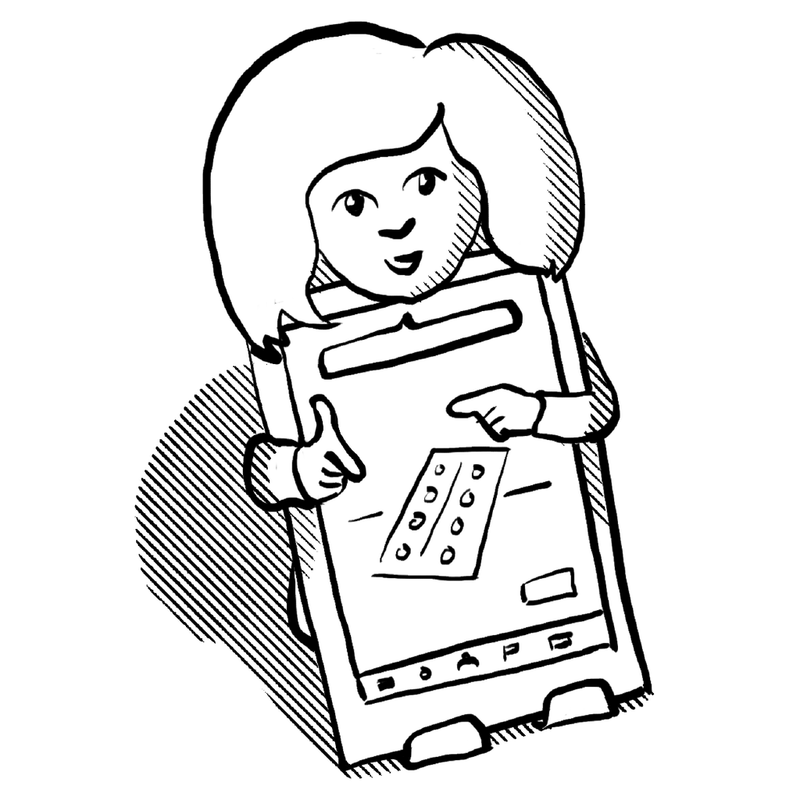
The gap between working concept and sellable solution
‘In the world of technology and care, only a few ideas genuinely get off the ground. You need parties – and I think that we are one of them – that develop ideas and explore opportunities. Within projects, you develop elements that can also be deployed elsewhere again. For example, certain aspects of robotics, such as how Liz behaves in the communication with the user. We are good at testing whether the principle works and at collecting evidence about the value. We invest in that with the help of grants. However, the subsequent step of making a commercially viable product requires a far greater budget. My struggle is that, in the end, investors may say: the concept is great but it is still too small scale for us to get really involved. How can we close that gap between development and commercialisation?’
Martijn Vastenburg, founder ConnectedCare
Conditions for implementation in care
There are several clear conditions that a care organisation must meet in order to successfully implement technology: clear objectives set by the management, an adequate selection of clients that will use the innovation, good instructions and guidance of the use for both clients and employees, accessibility of the tool and a timely evaluation of the experiences. Plus a feeling of urgency that there really is a problem, question or demand to which technology can provide an answer. These are lessons that Vastenburg has learned in practice. Another lesson is that reorganisations in care organisations can create difficulties. ‘You get to deal with new people who do not see the importance of the project or fail to understand it properly. Or an organisation says: we’re going back to our core business. Sometimes that can leave you completely sidelined.’
Breakthrough: simpler but far more realistic
‘When we started to develop Liz, we wanted to use a physical social robot as the basis. With speech recognition and movement so that people could develop a connection with the digital coach. Not only did that prove to be technically complex and expensive to purchase and use. The technology also failed to provide a better user experience. In the end, we went for a tablet, which resulted in a better scalable solution. And now users value the interaction even higher.’
Martijn Vastenburg, founder ConnectedCare
x
